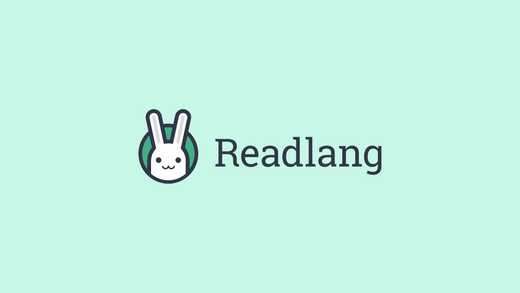Readlang Review: A Decent Assisted Reader But Could Be Better
 Written byLara Scott
Written byLara Scott- Read time2 mins
- Comments1


- Exporting words to other tools for more flashcard options is possible
- Import book-length texts to read
- Spaced repetition algorithm that helps you remember vocabulary
- Inexpensive
- Word review option is slightly limited for advanced students
Readlang's a web and online assister reader that allows you to analyze text word by word and save vocabulary, but could be better for advanced students.
Steve Ridout, founder of Readlang (and one of Duolingo’s senior software engineers) created Readlang with the focus of helping students learn a language by reading.
At first, I thought this would be a limited app, so I checked it out.
Take a look at what I found out just below.
Readlang’s features
Readlang boasts more than 40 languages that you can choose from when you sign up to the platform.
Each language has texts that you can read in the library.
When you choose one of the languages, it also features a word translation tool that you can use to find out the definition of a word, instantly.
All you need to do is swipe to translate it.
Importing books, articles and web pages is another feature of the Readlang platform through the web importer.
And the size of the texts you can import is impressive — it lets you import novel-sized books too.
Spaced repetition tool
This platform uses a spaced repetition tool/algorithm.
This benefits you by letting you study words you’ve encountered at particular intervals that are determined by the word frequency lists.
So, if you’re due to revisit and study the word estudiar, the Readlang algorithm will revisit that word at the right point in time to help you remember it.
Store translations
All of this is well and good, but what if you need to revisit a word that you see in another text?
Readlang has this covered as well.
All of your translations will be stored within the library.
When you store words, you also store their contexts.
They are stored in a particular order — with the most frequently used prioritised and the option to star/add the vocabulary that is most useful to your favourites.
I thought this was a well-thought-out feature that enables students to recall important vocabulary.
Transfer your words to other tools
If you’re looking to use a different option and learn with alternative methods, Readlang is a flexible app that lets you transfer your vocabulary to other tools.
Anki and Quizlet are two examples of alternative tools that are compatible with this app.
A more comprehensive review option would be ideal
Reviewing words normally consists of writing the translated version on the flashcard in your target language.
I think this is good, but could be developed a bit further — especially for advanced students.
For adjectives in the Spanish version, for instance, advanced students might want to learn synonyms and antonyms of the particular word.
This would help them develop their understanding.
For a more established alternative, see LingQ, or for a free and open source alternative, try LWT.
Have you used Readlang before?
Share your thoughts below.
 Grab the link to this article
Grab the link to this article